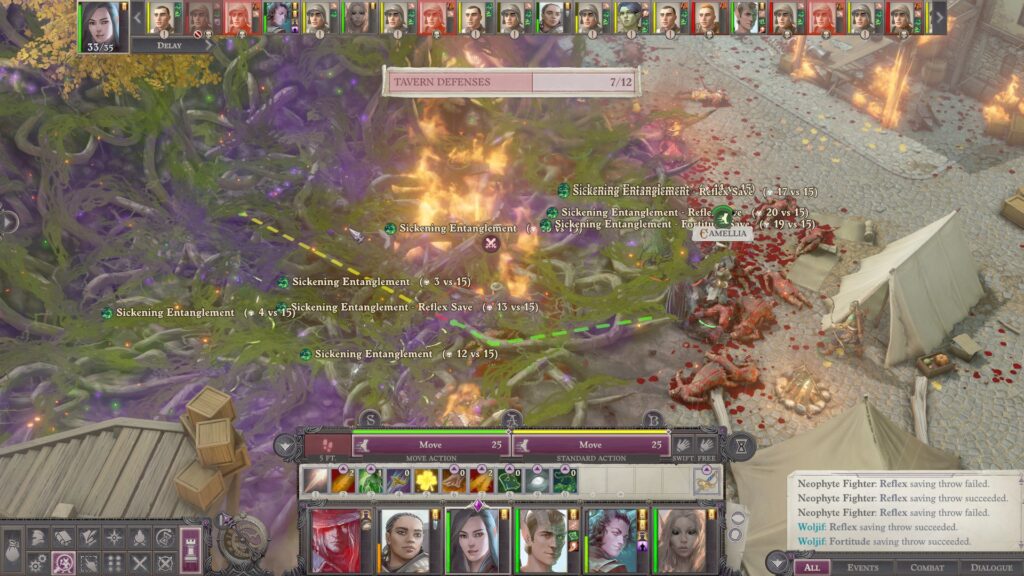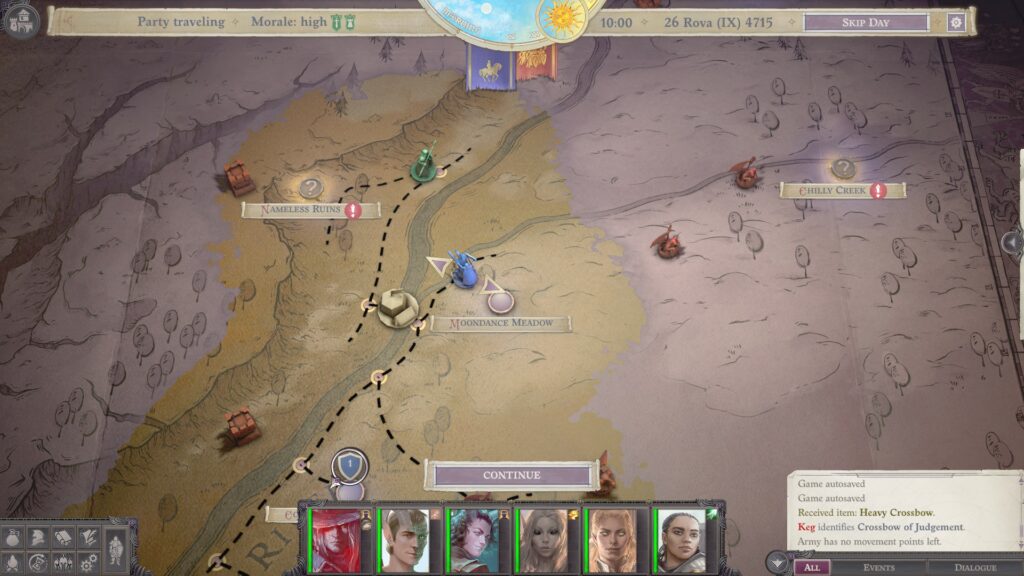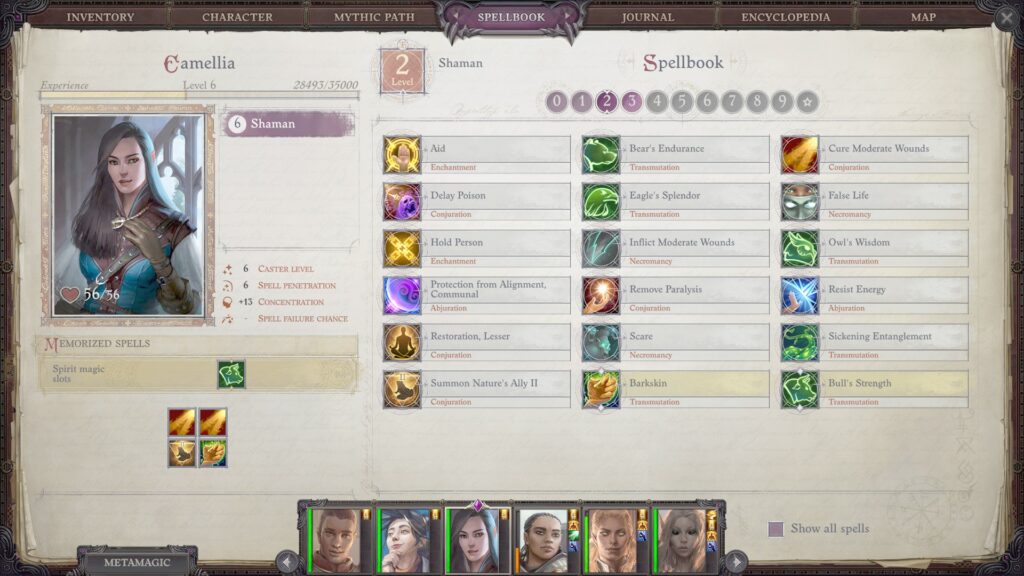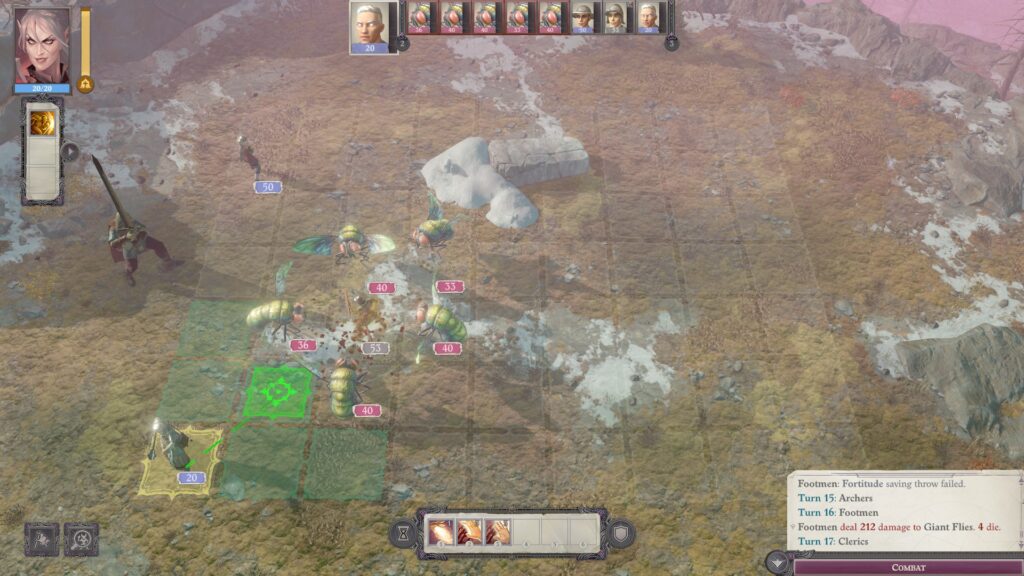
Developer: Owlcat Games
Publishers: Owlcat Games, META Publishing
Platform: PC, PS4, Xbox One
Tested on: PC
Pathfinder: Wrath of the Righteous – Review
Dungeons and Dragons is a classic tabletop RPG that has been around for decades. Throughout its lifetime there have been several revisions to the core ruleset, leading to different editions. Out of these, the 3.5 edition “Pathfinder” is one of the most popular, which several videogames utilize as their foundation. Pathfinder: Wrath of the Righteous is the latest game to do so, but does it manage to stand out?
Story
Wrath of the Righteous’ story takes place in the world of Golarion, where ages ago a rift to the abyssal planes was opened, leading to a demon invasion. The game begins with the player being carried into the city of Kenabres in a stretcher, wounded after a demon attack. There, they are healed by the dragon Terendelev, protector of the city, who tells them to enjoy the ongoing celebration and the brief moment of peace that goes with it. Sadly, this respite is short-lived, with the demon lord Deskari and his hordes suddenly appearing, decapitating the dragon and plunging the player into a rift in the ground.
Here, the actual adventure begins, allowing the player to explore the caves underneath Kenabres, in which they will meet the first members of their party and experience combat. From here on out, players will make their own decisions and they will affect the story, as well as decide the character’s moral alignment, possible companions, and mythic paths.
As expected from a game based on Pathfinder, Wrath of the Righteous is incredibly heavy on story and roleplay, requiring investment on the player’s part. While most things are well written and manage to gain a lot of engagement, there are areas where it lacks, mainly the morality-affecting options and later parts of the story.
The issue with said moral options is anything besides Good can stray into cartoonishly ridiculous. Evil options are the best example of the latter since they’re almost only suitable for playing as a murderous maniac. While this is a generalization and exceptions obviously exist, someone attempting to simply play a neutral law-abiding character will be left having to take only the neutral options, which are the ones not marked as alignment affecting.
Graphics
The game’s graphics are comprised of detailed 3D models, the quality of which could be higher despite being generally alright. Additionally, it features a wide arrangement of different areas to explore and enemies to fight. That said, the game does run into a pair of issues with the latter, since telling enemies apart in the turn order can become a nuisance due to their shared models and portraits.
The game’s UI is also not the best, as it only has limited slots for abilities and spells available, requiring a second hotbar covering the side of the screen later on. Similar to the shared portraits for enemies, the icons for abilities are also often reutilized for different ones, only adding to the confusion.
Besides this, there are also a good number of bugs and other issues to be encountered, such as dead characters standing in place, ragdoll physics going wild, spells causing graphical glitches, etc. Some more interesting ones also include duplicate abilities getting added to the hotbar, dead bodies appearing out of nowhere to disappear upon reloading a save, and more.
Sound
Wrath of the Righteous’ sound design is one of its highlights, thanks to its magnificent voice acting. Almost every single line of relevant dialogue is voiced, alongside a good amount of battle chatter. Besides this, the game’s soundtrack and SFX are also quite good, although not particularly memorable. This is mostly due to the music being somewhat generic, making it sound very similar to other games in the genre.
Gameplay
As previously stated, Wrath of the Righteous is built on the Pathfinder tabletop RPG ruleset. What this entails for the game is that almost everything is decided by invisible dice rolls which players affect with their stat block, combat positioning, etc. Anyone familiar with the genre will know how complex these systems can become and Wrath of the Righteous is no exception to this.
The core gameplay loop is divided into three sections: conversations, exploration, and combat. Besides the already explained morality-affecting dialogue options, during conversations, players may encounter options requiring checks of a certain skill. These consist of rolling a die where the result of the player’s stat for the ability in question will be added. If the latter exceeds the check amount, they’ll succeed. Upon passing a check, players will obtain different bonuses and a small amount of experience, while failing may entail missing information or receiving a debuff. Similarly, during exploration, checks may also appear in order to traverse difficult terrain, unlock chests, or interact with the environment. Working in the same way as those in conversations, these checks can often be retried at the price of losing in-game time.
While not exceedingly important, Wrath of the Righteous is timed through an in-game calendar. Wasting too much time may lead to certain events triggering before players are ready for them, although the window of opportunity for this is quite lenient. Actions that take up time include traveling between locations, resting, and failing checks. Funnily enough, despite how much real-time it takes, combat is surprisingly quick as far as in-game time is concerned.
Said combat works on a similar system as the check one, where the player’s stats are measured and often added to their skills in order to determine the power of their effect. While Pathfinder includes a plethora of character classes, these can be mostly classified as martial and spellcasters. Martial classes tend to rely on their weapons, with their stats modifying the damage these deal. They’ll also possess abilities allowing them to attack more times, etc. On the other hand, spellcasters rely on their magic much more, casting powerful spells with set damages increased by their stats.
In order to successfully hit an enemy, a character’s roll will have to be higher than the enemy’s defense; this being their armor or one of their stats. Should the hit connect, the damage would then be rolled, with modifiers such as resistances factored in to alter the outcome. The wide variety of abilities and spells also means not all of them deal damage, some instead apply effects to allies or enemies, while still following the rules as described above. A massive problem the game runs into is how stacked the enemy defenses are. Most normal enemies have a freakishly high Armor Class, which is the defense stat most attacks roll against, leading to character attacks missing time after time. Funnily enough, this doesn’t make the enemies more dangerous, it just makes them the equivalent of bullet sponges but without any satisfying feedback.
Wrath of the Righteous features two different combat systems: There’s the turn-based based system and the RTS-like portion. While turn-based combat is a staple in the genre, the sheer amount of characters a battle might contain can often make it quite sluggish, on top of how the ridiculous enemy defenses make most attacks miss. Sadly, the RTS system is rather clunkily implemented too, with characters standing around waiting for their attack timers to go off, making this only useful to autoplay large battles, or against enemies with huge defenses.
Besides the standard combat, once the game’s second act begins, the crusade mechanic is introduced. These battles take place on a simplistic board where gameplay is reduced to clicking on the enemy until the enemy’s army, or that of the player, is defeated. In order to determine damage dealt, a similar system to the basic one is utilized, factoring in the number of soldiers making up a squad and other modifiers. Additionally, some of the generals and squads will be able to employ abilities, although these are also rather limited compared to the game’s normal combat and are also poorly balanced.
Unluckily for new players, these explanations barely scratch the surface of the depth the game’s mechanics have. Although tutorials are available for most basic mechanics, they have a tendency to only pop up after players have committed the same mistake repeatedly, if they even decide to pop up at all. The other option left for those learning how to play the game is to manually browse the game’s encyclopedia, although doing so can easily become tedious.
Technical issues are not isolated to combat and tutorials either, appearing almost everywhere a player might look. Wrath of the Righteous is plagued by long loading times, characters getting stuck in objects, dialogue boxes popping up before their cutscene, passive abilities getting disabled and needing to be enabled over and over, and broken AI. Sadly, this is the tip of the iceberg when it comes to bugs, with a myriad of different ones popping up at any given time. An even more egregious example could be shortcut buttons simply refusing to work after a while, requiring a full restart of the game to function.
Conclusion
Pathfinder: Wrath of the Righteous is an enjoyable game that will delight players of the tabletop version who won’t mind a more straightforward experience. While newcomers may also be capable of enjoying it, a good amount of time will be required in order to get used to the mechanics. On top of having to take in loads of information as to how the game works, there is still the hurdle of overcoming the difficulty the core systems entail. Besides this, the current version of the game is plagued with bugs and issues all over the place, on top of the writing’s quality declining later on. Priced at a rather exorbitant £42.99/€49,99/$49.99 for such a messy release, it is hardly recommendable to purchase the game in its current state.
Personal Opinion
“I have a completely love-hate relationship with Wrath of the Righteous, 90% of it being hate. While I did enjoy some parts of it, I’d argue it was in no small part owed to my previous experience playing Dungeons and Dragons and Baldur’s Gate. Even with such experience, a good amount of the mechanics introduced in Pathfinder were hard to grasp, even after several tutorials. On top of this, putting up with the incredibly annoying bugs and loading times made playing the game rather sluggish, not to speak of how much I despised the half-baked crusade system that is required to progress. Although I put over 40 hours into the game, not many of these were particularly enjoyable. The map traversal and crusade mechanics on top of the continuous dungeon crawling (which I did enjoy in moderation) simply bloat the runtime to the point that beating the game a single time takes over 100 hours. Something I particularly despised about how the game deals with rolls, which is not mentioned in the review, is how they’re all hidden from the players.”
Pathfinder: Wrath of the Righteous - Review,










No Comments